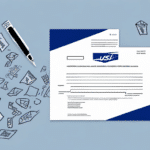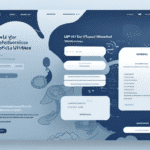Understanding UPS Shipping Rates After 1000 Shipments Per Month
When it comes to shipping, UPS is one of the most popular carriers in the United States. High-volume shippers, defined as those who send more than 1,000 shipments per month, rely heavily on UPS to get their products where they need to go efficiently and cost-effectively. While UPS offers competitive shipping rates for businesses of all sizes, the rates for high-volume shippers can be complex and difficult to understand. In this article, we’ll explore everything high-volume shippers need to know about UPS shipping rates after 1,000 shipments per month.
Why Understanding UPS Shipping Rates is Crucial for High-Volume Shippers
For high-volume shippers, even a small difference in shipping rates can add up to significant savings over time. This is why it’s essential for these businesses to have a solid understanding of UPS shipping rates and how they’re calculated. By knowing the ins and outs of UPS shipping rates, high-volume shippers can make informed decisions about their shipping strategies, negotiate better rates with UPS, and ultimately save money on their shipping costs.
Key factors that affect UPS shipping rates include:
- Package Weight and Dimensions: Heavier and larger packages typically incur higher shipping costs.
- Shipping Destination: Rates vary based on domestic or international destinations.
- Shipping Speed: Faster delivery options like next-day air are more expensive than ground shipping.
- Add-On Services: Services such as insurance, signature confirmation, and special handling can increase costs.
By optimizing these factors, high-volume shippers can reduce their overall shipping expenses and improve their bottom line.
The Basics of UPS Shipping Rates: What You Need to Know
UPS shipping rates are determined by a variety of factors, including package weight and dimensions, shipping destination, and shipping speed. UPS offers a range of shipping options, from standard ground shipping to next-day air, and each option comes with its own set of rates and fees. High-volume shippers can take advantage of UPS’s volume-based discounts, which can significantly lower shipping rates for businesses that send a large number of packages each month.
It’s important to note that UPS also offers additional services that can affect shipping rates:
- Signature Confirmation: Additional fee for requiring a signature upon delivery.
- Insurance: Higher coverage amounts come with increased fees.
- Special Handling: Extra charges for oversized, fragile, or hazardous materials.
Carefully considering your shipping needs and budget when selecting UPS shipping options and services can lead to significant cost savings.
How to Calculate UPS Shipping Rates for Large Volume Shipments
Calculating UPS shipping rates for large volume shipments can be a complex process. To obtain an accurate estimate of your shipping costs, you’ll need to:
- Determine the weight and dimensions of each package.
- Identify the shipping destination.
- Select the desired shipping speed.
- Consider any additional services or fees.
The best way to get an accurate estimate of your shipping costs is to use UPS’s online shipping calculator or contact a UPS representative directly.
Additionally, UPS offers customized shipping solutions for businesses with unique shipping needs. These solutions can include specialized packaging, dedicated transportation, and customized tracking and reporting. To learn more about these options and to see if you qualify for discounted rates, reach out to your UPS representative.
Factors That Affect UPS Shipping Rates After 1000 Shipments Per Month
For high-volume shippers, several factors can influence UPS shipping rates:
- Package Size and Weight: Larger and heavier packages cost more to ship.
- Shipping Speed: Faster delivery options increase costs.
- Shipping Destination: Rates vary based on domestic and international locations.
- Add-On Services: Additional services like insurance and signature confirmation add to the cost.
- Industry Requirements: Specialized shipping needs in industries such as healthcare or technology can impact rates.
High-volume shippers may also benefit from special volume-based discounts, which can help lower shipping costs over time.
Moreover, considering alternative shipping options, such as using a third-party logistics provider or consolidating shipments, can further reduce costs. These strategies can streamline the shipping process and potentially lower overall shipping expenses for high-volume shippers.
Comparison of UPS vs. Other Carriers’ Shipping Rates for High-Volume Shippers
When evaluating shipping rates, UPS is just one of many carriers available to high-volume shippers. Other popular carriers include USPS, FedEx, and DHL. To determine which carrier offers the best rates for your business, it’s important to:
- Compare Shipping Rates: Evaluate rates and services across multiple carriers.
- Consider Package Size and Weight: Some carriers may offer better rates for specific package sizes or weights.
- Assess Shipping Destinations: Certain carriers may have competitive rates for specific regions or countries.
- Evaluate Customer Service: The level of support and service quality can vary between carriers.
Utilizing third-party shipping software platforms can simplify the comparison process by allowing businesses to compare rates and services for multiple carriers in one place.
Tips and Tricks to Lower Your UPS Shipping Costs After 1000 Shipments Per Month
High-volume shippers can implement several strategies to lower their UPS shipping costs:
- Consolidate Shipments: Combine multiple orders into fewer shipments to reduce the number of individual packages.
- Negotiate Volume-Based Discounts: Work with UPS to secure lower rates based on your shipping volume.
- Optimize Packaging: Use lightweight and appropriately sized packaging to minimize costs.
- Implement Shipping Software: Automated shipping software can streamline processes and reduce errors.
- Utilize Eco-Friendly Packaging: Not only can this reduce costs, but it also promotes sustainability.
Regularly reviewing and adjusting these strategies can ensure maximum cost savings and efficiency in your shipping operations.
How to Negotiate Better UPS Shipping Rates for High-Volume Shippers
High-volume shippers have the leverage to negotiate better shipping rates with UPS. To effectively negotiate:
- Reach Out to Your UPS Representative: Clearly communicate your shipping needs and volume to discuss potential discounts.
- Leverage Online Shipping Tools: Utilize UPS’s online tools to access discounted rates not available through traditional methods.
- Analyze Shipping Data: Regularly review your shipping patterns to identify areas for optimization and cost reduction.
- Consider Alternative Shipping Methods: Explore different shipping options or carriers to find the most cost-effective solutions.
By taking a proactive approach and maintaining open communication with UPS, businesses can secure favorable rates and enhance their shipping efficiency.
Common Mistakes to Avoid When Dealing with UPS Shipping Rates After 1000 Shipments Per Month
High-volume shippers often encounter specific mistakes when managing UPS shipping rates:
- Overlooking Additional Fees: Failing to account for fees such as delivery area surcharges or residential delivery fees can lead to unexpected costs.
- Not Negotiating Rates: Ignoring the opportunity to negotiate based on shipping volume can result in higher expenses.
- Poor Shipping Data Analysis: Not regularly reviewing shipping data can prevent the identification of cost-saving opportunities.
- Ignoring Rate and Policy Changes: Staying unaware of updates to UPS shipping rates and policies can affect budgeting and planning.
By avoiding these common pitfalls and adopting a strategic approach to shipping, high-volume shippers can maintain control over their UPS shipping costs.
How Technology Can Help Streamline Your UPS Shipping Process and Save on Costs
Implementing technology solutions can significantly enhance the efficiency of your UPS shipping process and reduce costs. Key technologies include:
- Automated Shipping Software: Manages high shipping volumes efficiently, reducing human error and saving time.
- Rate Comparison Tools: Helps businesses compare shipping rates across multiple carriers to choose the most cost-effective option.
- Barcode Scanning Technology: Enables easy tracking and management of shipments, minimizing the risk of lost or misplaced packages.
- Shipment Tracking Systems: Provides real-time updates, improving customer satisfaction and operational transparency.
By investing in these technologies, high-volume shippers can optimize their shipping operations, enhance accuracy, and achieve significant cost savings.
Overall, understanding UPS shipping rates after 1,000 shipments per month is essential for running a successful and cost-effective shipping operation. By carefully considering shipping options, negotiating better rates with UPS, and leveraging technology solutions, high-volume shippers can keep their shipping costs under control and focus on growing their businesses.
For more insights and tools to optimize your shipping strategies, visit ShipScience.






